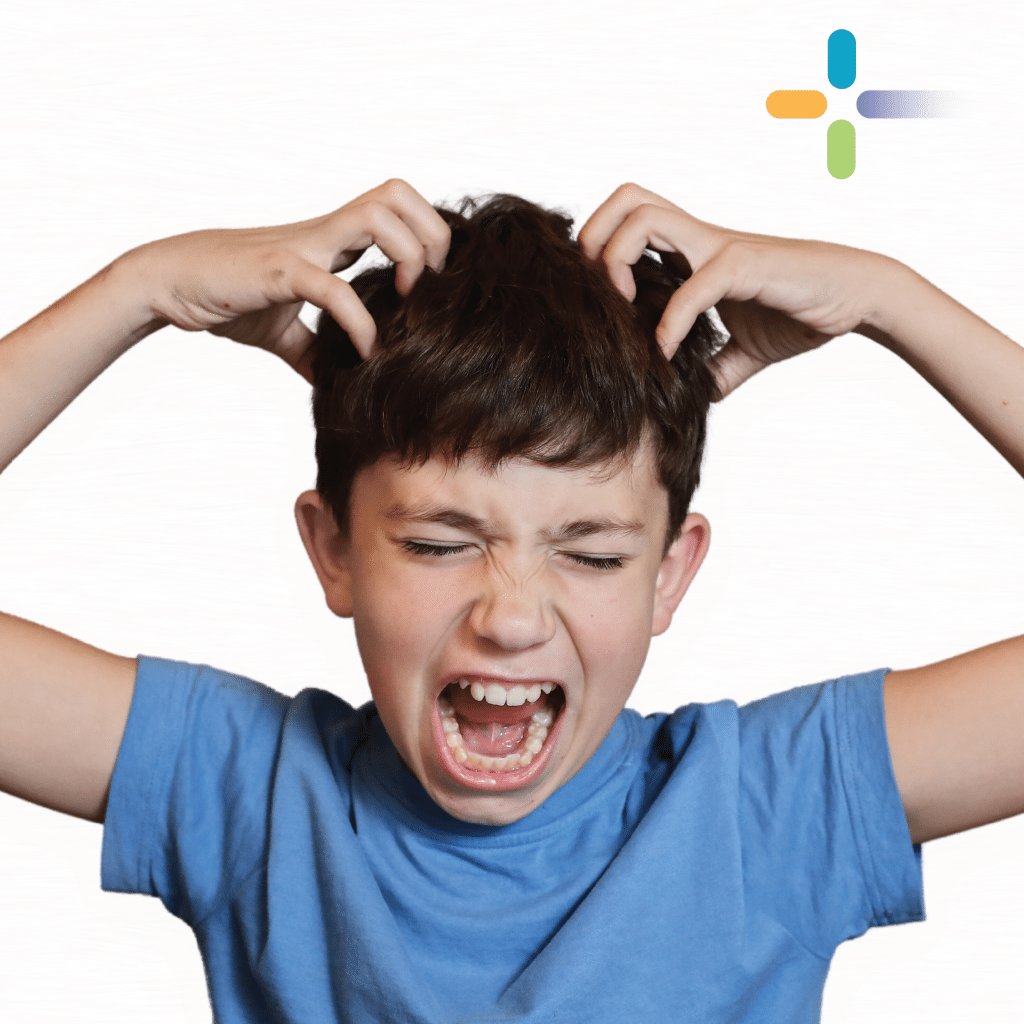Head lice prevention: The who, what and why of head lice
September 8, 2023

It’s almost certain that at one point in your life you’ve either heard of or worse yet, experienced head lice! But are you scratching your head trying to figure out exactly what they are? As a lice infestation can be frustrating and uncomfortable, we want you to be prepared to reduce the chances of your child bringing home these unwanted guests.
What are head lice?
Head lice are parasitic insects that live close to the scalp, are tan/greyish in colour, and are about the size of a strawberry seed. They hatch from eggs that female lice lay and attach to hair strands at about ¼” from the scalp. These eggs are white/yellow in colour.
When they hatch (usually one week after), the nymphs (nits) feed on human blood several times per day. They develop into adults about 9-12 days after hatching and can live for up to 30 days on a human head. The good news? They are not known to spread disease and will die within one to two days if they fall off the scalp.
How do they move from head to head?
It’s a common misconception that head lice fly or hop when in fact they are spread by crawling! So anyone who comes into head-to-head contact or shares headwear with an infected person is at risk of contracting head lice.
Symptoms of head lice
Here are the most common symptoms of head lice:
- A tickling or crawling sensation (as if something is moving throughout the hair)
- Itching on the scalp, neck, and ears
- Visible nits or adult lice on the scalp
- Irritability and difficulty sleeping (head lice are most active at night)
- Sores on the neck, scalp, and shoulders
Who is at risk for getting head lice and how?
As head lice is most prevalent among preschool and elementary-aged children, they are at greatest risk of contraction, along with their immediate family. However, contraction is still possible by coming into contact with clothing and through sharing personal items (such as combs and brushes or towels). With coats, hats, and scarves closely stored in close contact at school, this can act as a vehicle for the lice to move from item to item.
Prevention
It may be a challenge preventing your child from catching head lice, but parents can take steps to reduce the chances. We recommend suggesting your child keep their outdoor gear separate from others; avoid sharing personal items such as brushes, hats, and scarves; and avoid lying on shared cushions and pillows.
Treatment options for head lice
If you suspect you or your child has contracted new “friends”, it’s important to treat them as soon as possible. Often, head lice are mistaken for other things such as dandruff, residue from hair products, scabs, etc. But products used for these conditions don’t eliminate lice.
There are solutions! If you find yourself dealing with a lice infestation, don’t scratch your head over this problem, let us help you nip those nits in the bud! Stay tuned to our social media this month for more tips from Patti, one of our resident pharmacists. Subscribe to our Facebook page today.
The content on this website is for informational purposes only. No material on this site is intended to be a substitute for professional medical advice, diagnosis, or treatment. Always seek the advice of your physician with any questions regarding a medical condition or treatment, and before undertaking a new health-care regimen.
Source: Mayo Clinic, WebMD